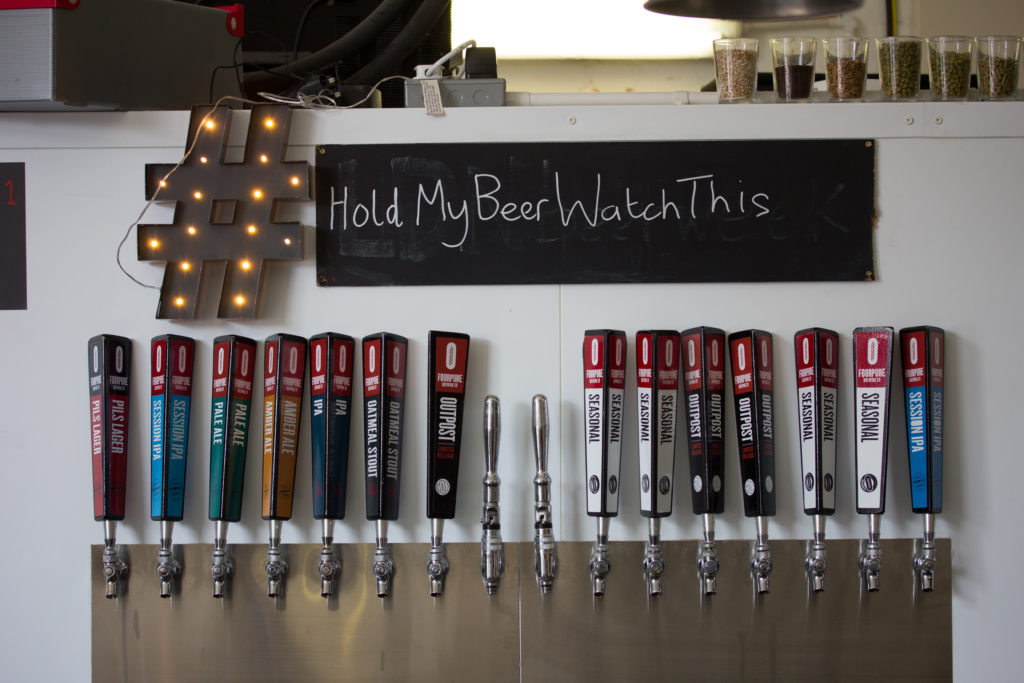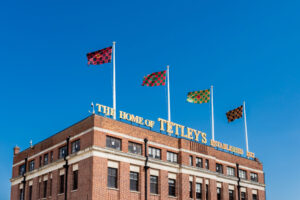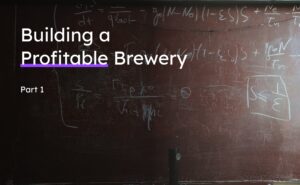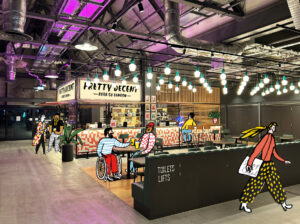
There are a series of pipes that run behind Unit 22 at Fourpure in Bermondsey, London. 106 metres of them, to be exact. They traverse the distance between the brewery’s home at Unit 22 on the Bermondsey Trading Estate and conclude their journey at Unit 16, a distance that Usain Bolt would probably cover in around 10 seconds.
In those pipes, for today at least, flow waves of the 4.7% Pils Lager, travelling at 40 metres per minute no less. The two guys having a smoking break outside an adjacent unit? None the wiser to the beer in motion behind them.
Once it arrives at its destination, it is piped through the wall. It then goes into the brewery’s centrifuge, then through a heat exchanger to drop it down as cold as possible, around -1C, without freezing it. It then goes through a carb stone before reaching its final destination, the tank where it will lager for between seven to 10 days.
“We wanted the unit next-door but we couldn’t get it. It was heartbreaking, and for a while, we thought we were going to have to move from this site,” explains Fourpure’s articulate head brewer John Driebergen.
Growth Curve
The estate’s landlord was concerned that there were too many food and drinks businesses on the site. What if they all went bust? But, as events organiser Sophie Thompson explains, they invited them around for a bit of a party, explained their plans, couples with loads of beer and the powers that be were finally on the same page with Fourpure’s desired expansion.
“I can’t believe we didn’t think of it earlier!” she says.
The need to look beyond its current unit to accommodate expansion is testament to the growth curve Fourpure is on. It is a journey mirrored by many of its peers, especially those in and around London. And like many of those breweries, it is a story that has developed greatly in a short period.
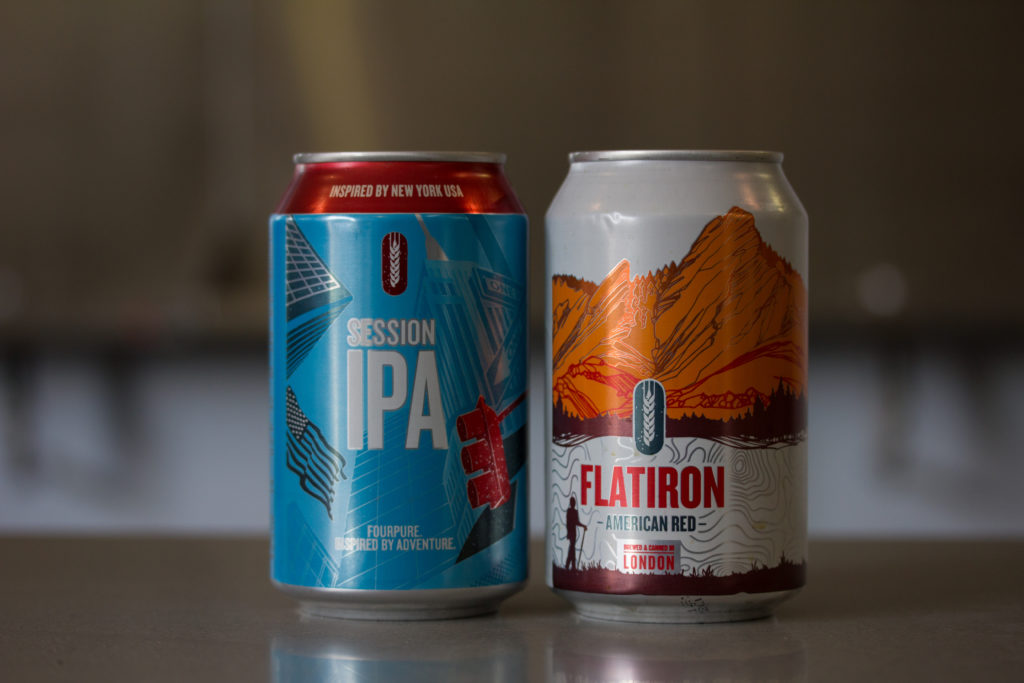
The Fourpure journey, for Driebergen at least, started in the summer of 2013. He walked into an vast, empty space alongside the brewery’s co-founder Daniel Lowe. “We walked around with a bottle of spray paint and a 12-pack of Diet Coke. We positioned them a various points on the floor, sprayed around them, using a measuring tape to help work out where everything will go, where it was going to fit, and how this whole brewery would pan out,” he says. “And I think about that all the time, and now, every morning when I walk in here I see how many tanks we have.”
Fourpure, as Driebergen explains, is going through a major phase of transition at the moment. It has invested in new equipment, new employees and a new unit. It is also pressing ahead with its barrel-ageing programme while also developing a wealth of new beers. Dozens of them. Not bad for a company that is currently known for its popular and prevalent core range.
Touring the older of the brewery’s units, Driebergen points out that its brewhouse came from Purity. It’s a 20 UKbbl/33hl brewhouse, a manual, gas powered system that the head brewer describes as “rudimentary” but one the team has made significant changes to over time. One such change is its new mashing system. All of its pre-milled grain, which arrives in 25kg sacks, get fed into the grist hopper, which houses a conveyor inside that carries it up the grain, dumps it down the shoot and feeds it in to the stainless steel hydrator you. “Our mash starts right there in mid air,” he says.
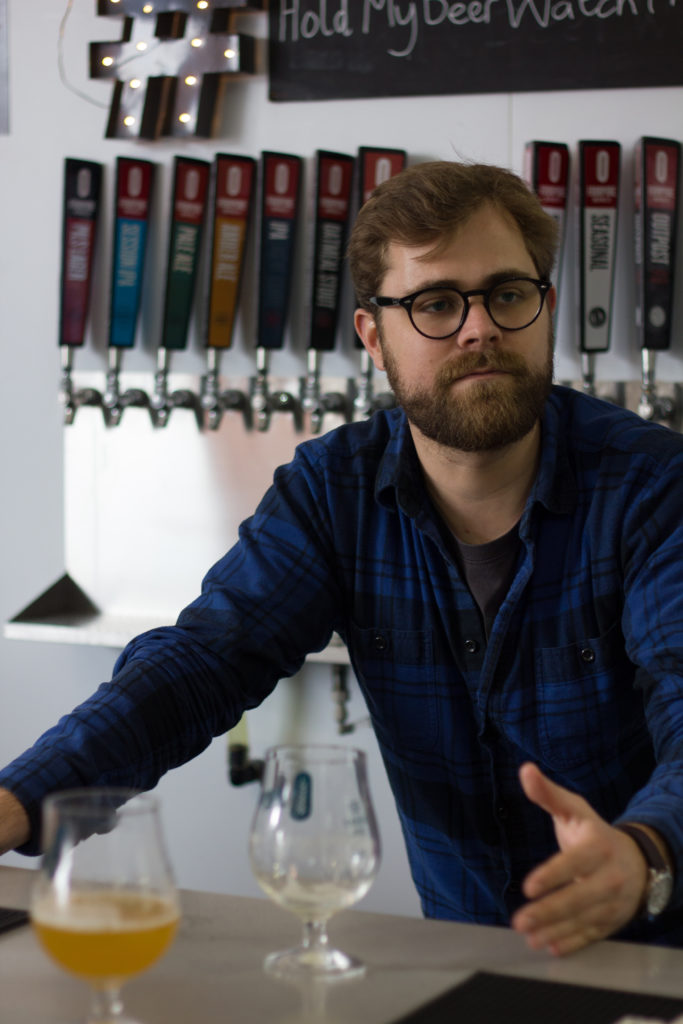
Flavour Focus
Another change Driebergen and his team have made is on the hop front. He points to their whirlpool, a vessel that used to be a hop back. The brewing team used to cram it with full leaf hops, like its previous owner Purity used to. Then they would transfer all of the wort from the kettle to the hop back, recirculate and cast out from there. But with the hop loads Fourpure was using, it just didn’t work on several fronts.
“We weren’t getting anywhere near the level of flavour extraction we wanted in any of our beers from those hops. It was a a big learning curve as that kit was designed for brewing 3.5% – 4% beers. So suddenly, when you’re trying to brew a 6.5% IPA that uses 40kg of hops, it is just not happening. The biggest load Purity ever put in was 8kg,” he recalls.
So, in the spirit of getting things to where they want to be, they did some homework, brought in some welders, and worked out how they can turn the hop back into a whirlpool. The brewery now exclusively uses pellets while it runs 100hl hot and cold liquor tanks, which can tap into Fourpure’s industrial water supply, a part of its operation that only came into operation the day before our visit.
It wasn’t something we had the ability to tap into, but now we do! It was a challenge, it was slow and it was an arduous process. The water company was concerned with us contaminating the water supply, and we had to jump through hoops, but we are now there. Thankfully,” enthuses Driebergen.
Elsewhere in the brewery, its mashtun houses up to 800kg of grain. while the kettle has capacity for 36-38hl kettle full with the brewing team running 75-90min boils. Oatmeal Stout is on the agenda as we pass. Fourpure’s original tank setup comprised three tanks with several bright beer tanks. They now have 17 FVs and eight bright beer tanks. Impressive growth considering brewing only started two years and three months earlier.
Grand Plans
John Driebergen has been with Fourpure not from the beginning, but before the beginning, as he words it. Prior to his current role, he was a cellar hand at Meantime, before quickly moving up to the brewhouse, the lab and then finally running its pilot and recipe development programme.
“But one day, I had decided I had enough of developing all of these recipes for them not to be used as they were too busy churning out the London Lager.”
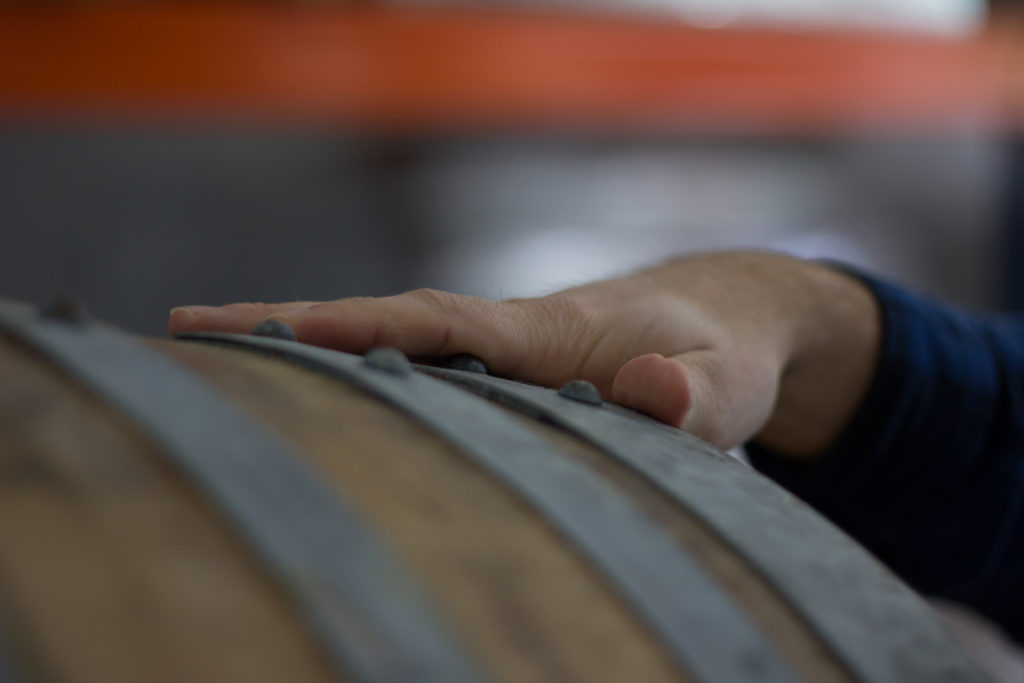
So Driebergen decided that he wanted something new. And it so happened that on that day, Daniel Lowe had posted an advert looking for a head brewer to work at a startup brewery.
“We met the following day at the Dean Swift pub. We had a beer, then another beer, and then we had another beer. We kept on talking, getting along really well. An hour later, he emailed to hire me. So within 24 hours of deciding I wanted to quit, I had a new job. And as I had holiday to use, I was done at Meantime a week later,” he recalls fondly.
Fourpure co-founder Lowe was in a position to hire Driebergen owing to the fact that he sold his company several years prior. It enabled him to travel, fall in love with American craft beer, and decide on starting a brewery with his brother and co-founder Thomas and bring the head brewer on board. A “very sensible decision” if the brewer says so himself.
“Too many people start breweries with hiring a brewer and decide that they can do it themselves. And that’s a mistake I think a lot of small breweries make,” he says.
By avoiding that potential pitfall, Fourpure in 2016 employs 27 people that have nine nationalities. Seven of these are in production, four in sales, Sophie Thompson in events, two in office, two packaging, two owners and the team is completed by those across logistics, deliveries and the taproom.
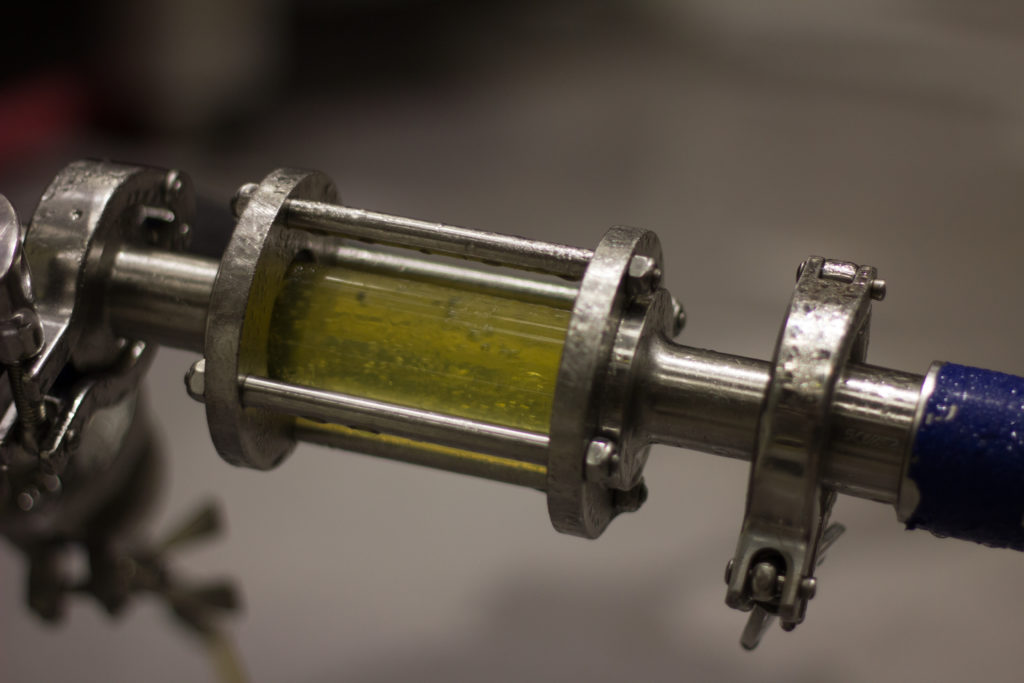
It’s a big team Driebergen admits but, as he confidently states, Fourpure produced between five to six thousand hectolitres in 2015. This year they will do between 15-20 thousand hectolitres. A big leap, and one they are well on course to hit.
“If you are growing on that curve where you are effectively tripling in size, you need to employ the right people and you need to have people on board six or seven months before you think you are really going to need them so by that point, they can have their game face on and ready for it.”
New Normal
According to Driebergen, this level of growth is not unprecedented but is also very positive.
“We know what we are doing. We have a quality-oriented focus that is driving growth. We export little, at present, compared to many others in our size in the UK but what we do that is disproportionate to those is the level of draught sales we do in London and that we deliver ourselves, he explains.
“We have been a little bit fortunate with the timing of the takeovers of Meantime and Camden as there are people that don’t want to buy beer from those big breweries but still want an accessible pale ale or lager on draught. And as a result, they have been led our way. The timing is good as the brand has been out there, the quality has been there and the capacity to supply from our side is now less of a problem.”
While the Bermondsey business may be benefitting from the headwinds in beer buyer’s ethical decisions, regular investment at Fourpure has ensure that it is able to grasp the opportunity with both hands.
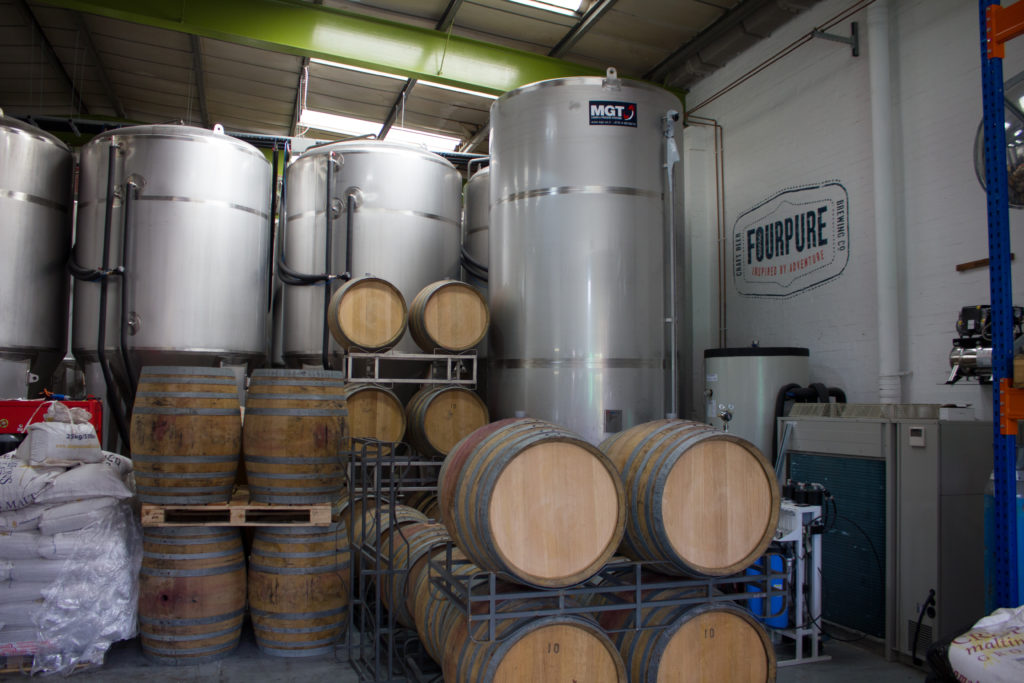
FVs from MGT are a mainstay in the brewery, but a particular focus of pride and joy for Driebergen is the team’s BrauKon HopGun. During our time with Fourpure, its Pale Ale is being dry-hopped with copious amounts of Centennial and Citra. Looking into the side you are gifted a vision into a hop-driven utopia with the flavours that have enamoured so many drinkers to such styles, literally developing in front of your very eyes.
By feeding the beer through three inlets, they form a whirlpool going in one direction while another forms a whirlpool going in the opposite direction, which forms a lot of agitation and turbulence. According to Driebergen the pellets are being broken about at an optimal rate, with oils extracted incredibly efficiently. Normal dry-hopping takes on average three to seven days, but here it takes place in three to five hours, depending on the beer. It’s safe too, with little climbing involved while effectively no oxygen is being picked up either.
“You end up with a much cleaner dry hop character. We were never truly satisfied with what we were doing before so we are very happy with this. We dry hop every day, it is fantastic. I love it,” he says.
The beer benefitting from this process will end up in both keg and can, the only vessels used by Fourpure. A Lambrechts kegging system, installed last December, is in operation and capable of filling up to KeyKegs an hour.
“It has been brilliant. The overall cycle, with pre-evacuation takes little over a minute. It’s very fast. We use EKegs and have some of our own branded ones, too. When we started with KeyKegs, we did because of the reasons many others do as they offer a very good solution for a smaller brewery, he says. “But we have found ourselves transitioning more to stainless steel kegs, supplied by Schaefer.”
Elsewhere, its keg washer from Premier Stainless Systems, is a great piece of kit that Driebergen explains is used en masse by companies such as Summit Brewing Company in the US.
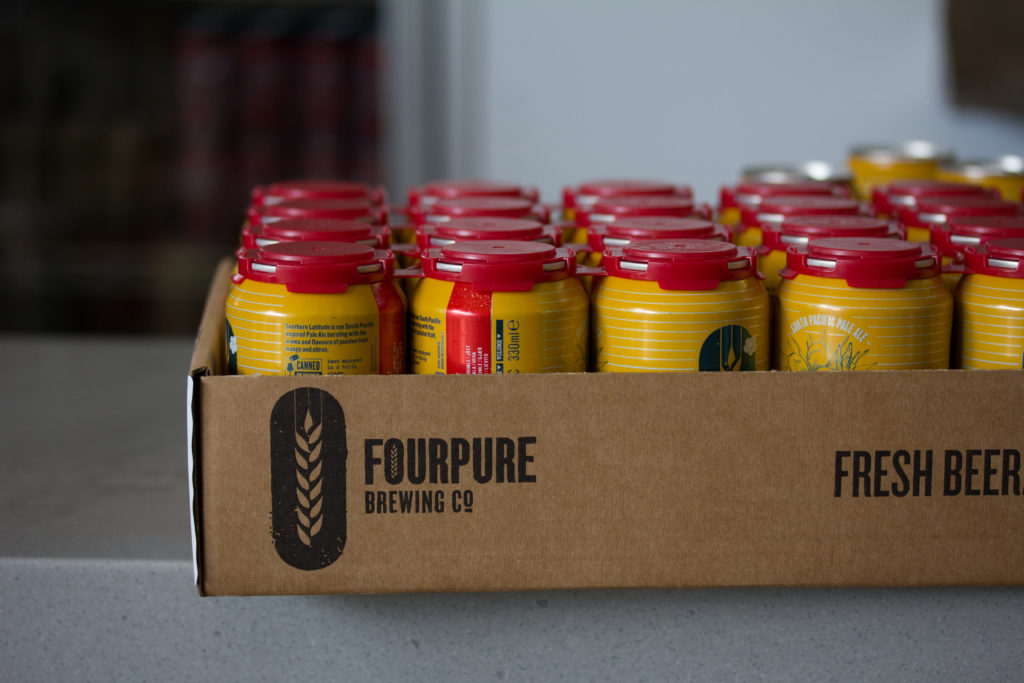
Inspired Investment
While Fourpure has invested heavily in its kegging operations, it has done the same when it comes to its canning facilities. A brand new line from CFT is a high-specification system that features a coder and two rinsers for different can sizes, with rinse water going in a perpetual loop. 24 fill heads offers capacity of up to 12,000 cans an hour while double counter pressure pre-evacuates with CO2 while a bubble breaker knocks out any foam in the headspace before a little amount of CO2 is injected into that headspace. It then lets the lid land on it before four rotary seamers go to work.
“This technology means we are able to process 220 cans per minute, compared to the 30 or so we could do before with our old machine. An X-ray machine checks the cans for fill level and rejects any that are short. The other way to do it is to weigh and that is hard to do at this speed, which isn’t really sustainable. You need a scalable, reliable solution. Any short cans are punched out, and we drink them! I’m reassured that we have a guarantee that this brewery is not sending out any short fills,” he explains.
A drier, also from CFT, dries the cans before accumulation. For now, a whole team of people packs and then are palletized, a process that will imminently become more automated. It has been a significant investment for the brewery and one that has changed things dramatically. What took them six hours, now takes 45 mins. And the quality is better, too.
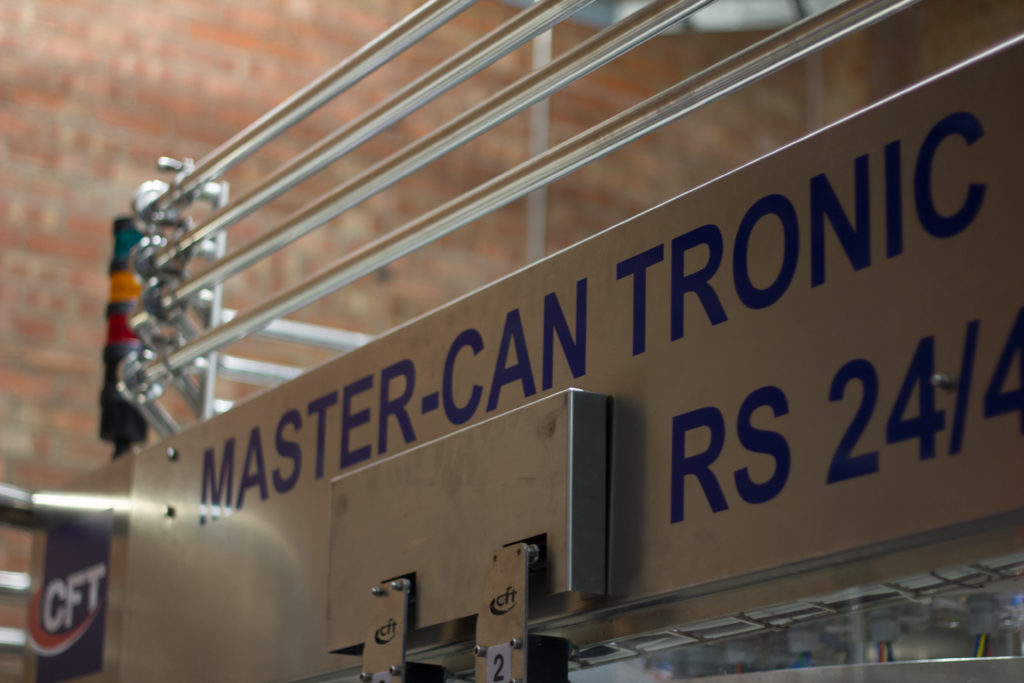
Fourpure’s operation is more effective and efficient than ever, while its Pils, Pale Ale and Session IPA are working their way into an increasing number of bars, pubs, bottle-shops and supermarkets. And while proving themselves with the “bread and butter” core range was essential and integral to Fourpure and Driebergen, demonstrating that there is more to the brewery than those beers is of paramount importance to the team.
They brewed 35 unique beers last year, a figure that will easily surpassed in 2016. New numbers such as Belgian Blonde Cherry Tart, Burnt Ends Smoked Porter and White IPA Vertical Drop were all incredibly impressive while a coffee variant of its Oatmeal Stout, Morning Brew, packed a serious punch and was an excellent example of the style. While these are on show at the brewery’s popular taproom and at takeover events, the latest addition to its core range, the 4.7% Flatiron American Red enjoyed a successful launch last month.
Access to an improved water supply, increased capacity and the introduction of a triple brew day will ensure that new beers will hopefully see the light of day even more frequently from here on in.
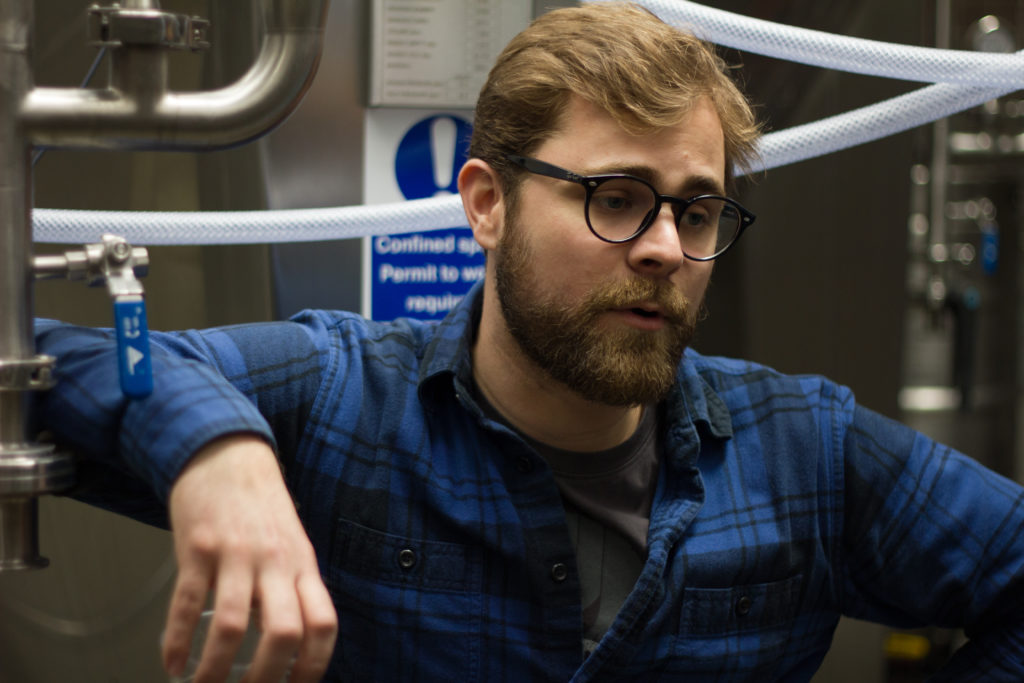
Driebergen is also keen to highlight the advent of the brewery’s barrel-ageing programme that will bear fruit from the end of 2016 or early next year. “We are looking at broadening things with mixed-culture sour beers among others, and this expansion was always part of the plan. Time was not on our side previously but we now have enough talented people in the team to make it happen,” he concludes.
And it’s that affirmative approach, an increasing diverse beer portfolio and the ability to cater for growing market demands that will ensure that the third year in the Fourpure story will be its best yet.

